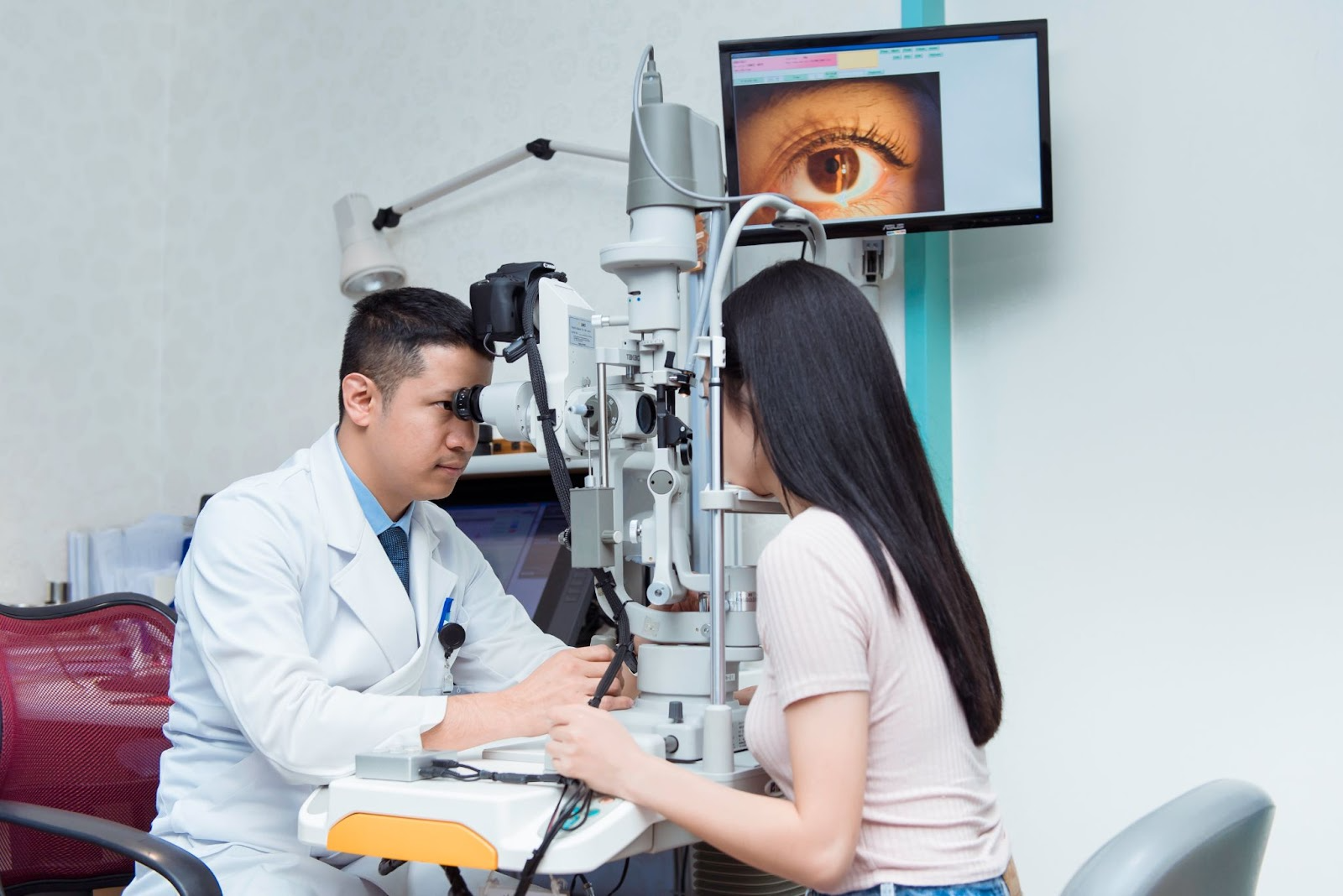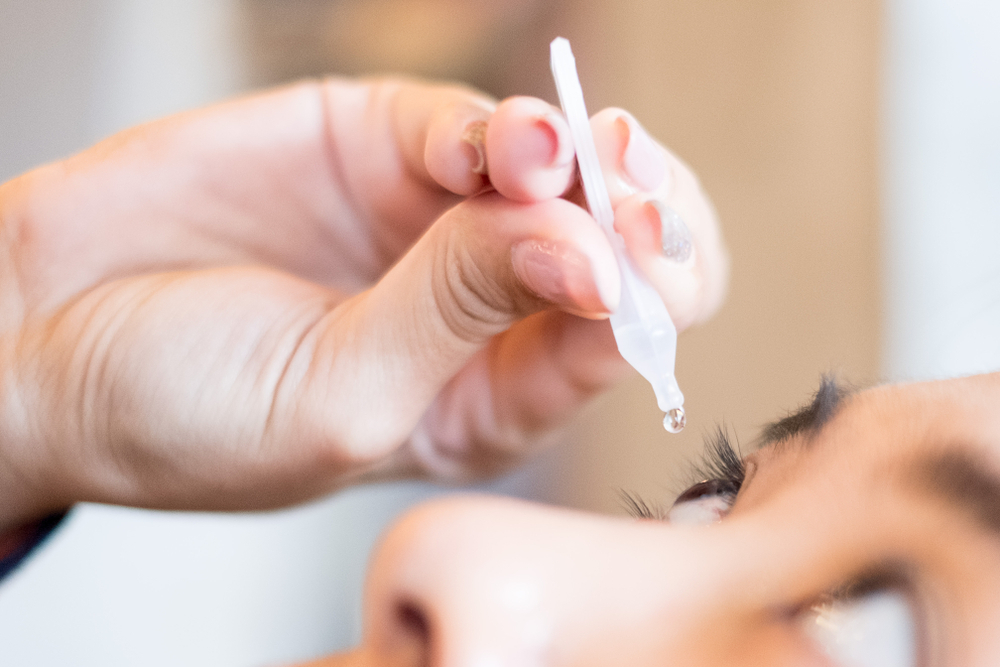PREPARATION STEPS FROM A-Z FOR REFRACTIIVE SURGERY
Many people are still confused about the decision to have refractive surgery (near-far-sightedness) because they think that the preparation before surgery will take a lot of effort in the long run. In fact, the steps to prepare for surgery are not complicated if the patient follows the instructions of medical professionals. Learn the preparation steps from A-Z for a quick and effective refractive surgery through the article below!
Learn about surgical methods
The first thing the patient needs to do to prepare for a successful surgery is to know the information about each surgical method to make the most suitable choice for himself. Currently, there are 4 popular and safe refractive surgery methods that bring good visual quality to patients: Phakic, ReLEx SMILE, Femtosecond Lasik and SBK Lasik.
Phakic surgery
Phakic is a surgical method to correct refractive errors by using highly secure lenses designed specifically for each eye, placed directly behind the iris and in front of the lens. Currently, there are two types of intraocular lenses used in Phakic surgery: ICL lenses and IPCL lenses. This method is suitable for patients with thin corneas, high refractive index (treatment threshold up to 30 degrees nearsightedness, 15 degrees farsightedness, 10 degrees of astigmatism with IPCL lenses; treatment threshold up to 18 degrees myopia), 10 degrees of farsightedness, 6 degrees of astigmatism with ICL lenses). The surgical mechanism limits the impact on the corneal surface, helping to minimize the dryness of the eye after surgery, providing full HD visual quality. In particular, the intraocular lens has UV protection to help protect the patient's eyes.![]() Learn more about the Phakic method here.
Learn more about the Phakic method here.
ReLEx SMILE surgery
ReLEx® SMILE (Refractive Lenticule Extraction, Small Incision Lenticule Extraction) has a surgical mechanism that lives up to its name - 'removes a thin lens-shaped layer of tissue through a small incision'. Accordingly, ReLEx SMILE uses Femtosecond Laser to separate the cornea into 3 layers, automatically separating the middle tissue layer; Through a very small incision (2mm) at the edge of the cornea, the core of the separated tissue is removed. ReLEx SMILE will be the right choice for patients with less than 10 degrees of myopia and 3 degrees of astigmatism. With a small incision and application of the most advanced laser technology today, ReLEx SMILE will limit the impact on the optic nerve, minimize dry eyes and inflammation after surgery, and help the eyes recover quickly.![]() Learn more about the ReLEx SMILE method here.
Learn more about the ReLEx SMILE method here.
Femtosecond Lasik surgery
Femtosecond Lasik is a surgical method that uses a Femtosecond laser to create a corneal flap and uses an Excimer laser to project multiple points on the inner corneal parenchyma to treat refractive errors. This method is performed entirely by laser from two systems MEL 90 and VISUMAX. Femtosecond Lasik will be the right choice for patients with less than 12 degrees of nearsightedness, 6 degrees of farsightedness, and 6 degrees of astigmatism. With a surgical mechanism applied entirely by laser technology, Femtosecond Lasik provides an accurate incision according to the physiological curve of the eyeball, providing good visual quality and helping the eye recover quickly.![]() Learn more about the Femtosecond Lasik method here.
Learn more about the Femtosecond Lasik method here.
SBK Lasik surgery
SBK Lasik is a surgical method that uses Moria SBK knife (Sub-Bownman-Keratomileusis) to create flaps and then uses Excimer laser (Carl Zeiss Mel 90 system) multipoint projection to change the corneal structure. SBK Lasik will be the right choice for patients with less than 12 degrees of nearsightedness, 6 degrees of farsightedness, and 6 degrees of astigmatism. With proven effectiveness, SBK Lasik offers a safe and affordable surgical experience to the vast majority of patients.![]() Learn more about the SBK Lasik method here.
Learn more about the SBK Lasik method here.
In-depth eye exam before surgery
An in-depth eye exam before surgery is an extremely important step, helping to check whether the eye condition meets the requirements for surgery, thereby ensuring the surgical process is safe and successful.
At Japan International Eye Hospital, patients will receive a thorough pre-refractive eye exam with 7 intensive steps:
- Check intraocular pressure.
- Check the refraction.
- Test your eyesight with 6 in-depth tests.
- Corneal mapping, anterior chamber depth measurement and anatomical evaluation of the eye.
- Retinal test to screen for the risk of retinal degeneration (Applicable to eyes with severe myopia).
- Direct consultation with a doctor.
- Answer questions by the Consultant.

![]() Register for FREE pre-surgery eye exam now with Japan International Eye Hospital (Wednesday & Saturday) here.
Register for FREE pre-surgery eye exam now with Japan International Eye Hospital (Wednesday & Saturday) here.
Prepare a reasonable rest time
Although current refractive surgery methods are almost painless and take place quickly (in only 15-20 minutes for the entire surgery), however, patients still need a period of time. Adequate rest for the eyes to recover and achieve the best visual quality.
You will rest at home for the first day after surgery, then you can return to study and light work the next day.
The patient's eyesight will recover quickly within 24 hours after surgery, but the quality of vision will not be stable right away, but the time to improve depends on the location, but this does not affect too much work. and daily activities. For the eyes to fully recover, it may take only 1-2 weeks for the patient, but some people need 1-3 months, more rarely, 6 months with poor accommodation.

Prepare the cost of surgery
Patients should prepare enough expenses so as not to miss the most ideal surgery time for themselves. Patients can refer to the cost of refractive surgery methods at Japan International Eye Hospital at the present time (May 2023) as follows:
- Phakic: 90,000,000 VND / 2 eyes - 100,000,000 VND / 2 eyes (depending on the type of lens).
- ReLEx SMILE: VND 46,000,000/ 2 eyes (original price VND 70,000,000/ 2 eyes).
- Femtosecond Lasik: 38,000,000 VND/ 2 eyes.
- SBK Lasik: 24.200.000/2 eyes.
The cost mentioned above includes the cost of eye examination, eye protection glasses and medicine after surgery, 12 months of free follow-up examination. In addition, patients can also refer to the installment plan at Japan International Eye Hospital to reduce the cost burden.
![]() Message now for advice on installment plan at Japan International Eye Hospital!
Message now for advice on installment plan at Japan International Eye Hospital!
Prepare mentally
Although refractive surgery has almost no pain because the patient has been numbed to the corneal surface before and during the surgery, however, the patient needs to be psychologically stable and avoid worrying about the surgery. smoothly and quickly.

Know the rules of eye care after surgery
Eye care after surgery is equally important to help protect the general health of the eyes and avoid re-occurrence. Therefore, patients need to understand the rules of hygiene, living, drug use and re-examination to help the treatment process achieve maximum effectiveness.
![]() Learn more about eye care after surgery here.
Learn more about eye care after surgery here.

Above are the steps to guide the patient to best prepare for a successful refractive surgery. If you have any questions, please message the Japan International Eye Hospital or contact Hotline 0902 24 22 91 for advice and answers!
